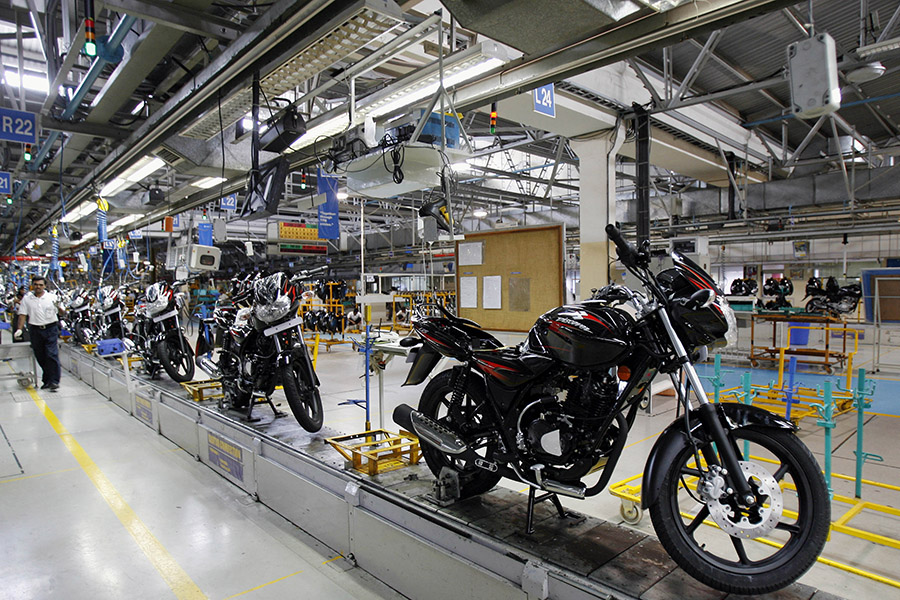
Bajaj Auto's second quarter profit dips marginally but Street optimistic
With growing sales volume of the recently launched Platina and CT100 motorcycles and an uptick in exports, the company's performance is likely to improve in the next two quarters, say analysts

Image: Punit Paranjpe/ Reuters
The automaker’s net profit dropped 1 percent to Rs 1,112 crore in the July-September quarter compared to the same period last year, according to a company statement to the BSE. In Q2 FY17, the two- and three-wheeler maker had posted a net profit of Rs 1,123 crore.
However, profit after tax met Street estimates. The company’s shares closed marginally up at Rs 3,257 apiece, up 1.09 percent from previous close. Intraday, the company’s shares hit a high of Rs 3,310.2.
While the growth was largely flat in the quarter, with revenue up 2.08 percent compared to last year and earnings before interest, tax, depreciation and amortisation (EDITDA) and turnover up 1 percent each, the sweet spot was the uptick in motorcycle sales, especially the growing volume of the Platina and CT100. Pick up in volume of commercial vehicles, and exports added to optimism about the company’s performance for the next two quarters, Abhishek Jain, research analyst at HDFC Securities told Forbes India.
Bajaj Auto sold 45,000 units of recently launched Platina, and the company said the bike was “stocked out”. The CT100 electric start that was launched in August, sold over 99,000 units in two months.
“Motorcycle sales volume was muted in the first two months of the quarter, hit by uncertainty over GST but with the growth in volumes of the new CT and Platina, Pulsar and KTM sales, a pick-up in exports and strong volume growth in three-wheelers, we expect stronger performance in the next one to two quarters,” Jain told Forbes India.
In the quarter ended September 2017, Bajaj Auto sold 1,071,510 vehicles (including motorcycle and commercial vehicle sales in the domestic and international markets), up four percent from the 1,031,945 vehicles sold in the same period last year. Chirag Shah and Karthik Subramaniam from Edelweiss Securities in a recent automobile sector outlook report had said that the automaker’s lack of presence in scooters along with elusive export revival and strengthening USD-INR will restrict overall earnings momentum.
Cumulative motorcycle and commercial vehicles exports grew six percent on year, in the quarter under review but were down 2 percent sequentially. Bajaj Auto, in a statement to the BSE, said, “With stability returning to Nigeria, company reaped the benefits of its support to the network and customers during difficult times in the past…The relative slowdown in Sri Lanka has been compensated by a substantial growth in volume in Bangladesh and Philippines.”
Highlighting the key risks to the company’s performance, the Edelweiss report said, “Bajaj Auto has not been able to move away from its traditional strong brand positioning. Given the shift in demand to >250cc, it is imperative for Bajaj Auto to launch credible offerings in emerging categories. Else its market share in the premium motorcycle market will come under threat.”
Currently, in its premium segment, Bajaj Auto sells the Pulsar 135LS, 150, 180, 220F, NS160, NS200 and RS200 and the Avenger Street 220 and 150, and the Cruise 220 – all in the sub-250cc category, with the monikers of all the bikes indicative of their engine’s capacity. The Dominar 400 is the only current offering in the >250cc premium category.
Post Your Comment















